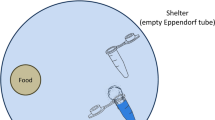Abstract
FOLLOWING closely on the several recent demonstrations of the considerable insecticidal potency of 'D.D.T.' (dichloro-diphenyl-trichlorethane) it is surprising to find another substance which, on preliminary trial, promises to be at least as good, and in some ways even better than, 'D.D.T.'. Through the courtesy of Imperial Chemical Industries, Ltd., I have recently had the opportunity of carrying out a few trials with a substance temporarily designated '666' which has been recognized for some little time by I.C.I. research workers as possessing unusually active insecticidal properties. This substance, which may now openly be referred to as hexachlorobenzene, has the general formula C6H6Cl6 and is a very remarkable compound in that the extraordinary insecticidal properties are held solely by the γ isomer. It is understood, however, that a general statement is shortly to be made by those who have been engaged in the development of this substance as an insecticide, when details on that interesting point will be published.
This is a preview of subscription content, access via your institution
Access options
Subscribe to this journal
Receive 51 print issues and online access
$199.00 per year
only $3.90 per issue
Buy this article
- Purchase on Springer Link
- Instant access to full article PDF
Prices may be subject to local taxes which are calculated during checkout
Similar content being viewed by others
Change history
05 May 1945
An Erratum to this paper has been published: https://doi.org/10.1038/155541e0
Author information
Authors and Affiliations
Rights and permissions
About this article
Cite this article
TAYLOR, E. Acaricidal Property of a New Insecticide, Hexachlorobenzene. Nature 155, 393–394 (1945). https://doi.org/10.1038/155393a0
Issue Date:
DOI: https://doi.org/10.1038/155393a0
This article is cited by
-
Die Wirkungen von Insektiziden auf Tiere
Zeitschrift für Prāventivmedizin - Revue de Médecine Préventive (1970)
-
Eigenschappen en Giftigheid Van Hexachloorcyclohexaan
Tijdschrift Over Plantenziekten (1950)
-
Kontaktgifte
Naunyn-Schmiedebergs Archiv f�r Experimentelle Pathologie und Pharmakologie (1949)
-
Hexachlorocyclohexane as an Insecticide
Nature (1945)
Comments
By submitting a comment you agree to abide by our Terms and Community Guidelines. If you find something abusive or that does not comply with our terms or guidelines please flag it as inappropriate.



